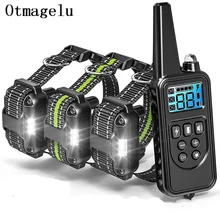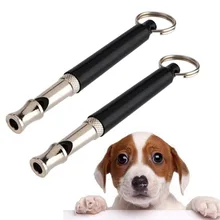Pulling And Tugging On A Leash
Another behavioral problem that dogs have starting from their puppy days is pulling and tugging on a leash. This is another one that can be started and encouraged by dog owners. When you play games with the dog, such as tug of war, it makes the dog feel like they can continue to do the pull and tugging bit. This can start a bad habit that can be difficult to break.
If you have a body harness, it can be used when you are training your dog not to pull and tug. It can also be used when you have to retrain your dog to stop pulling and tugging. Work with the dog so that they can accept and use the harness the same way it would use a collar on their neck.
If you are walking the dog, get a toy for them so that you can make them stay at your side. You can also use a training collar. This collar can be used if you are having problems training them not to pull and tug.
Even if you use a choke chain, you can train them in the same way. Regardless of which one you use, make sure that it fits correctly around their neck. It’s important that it’s not too big or too tight for them.
As you are walking with your dog, the leash should remain loose. If they pull ahead of you, change directions so that they will end up behind you. This should be done before it gets to the end of the leash. Do not allow the puppy or dog to pull you. While they are still young, they need to learn how to walk the right way.
As they get older and larger, it’s crucial that they are walking correctly. As you are correct him, do not yank or pull on their neck. Just make a gentle movement and they will respond. Using too much force can cause the dog to become agitated.
Inappropriate Urination
Inappropriate urination for a dog owner can be very embarrassing. Not only that, combined with defecation, it can wreak havoc for them.
Before you can make changes, you have to get to the root of the problem. There could be different reasons why some dogs cannot control their bladders. Once you find out the root, then you can move on from there.
There are two types of inappropriate urination, excitement and submissive. This guide is going to describe both types.
Excitement Urination
When dogs get excited, they tend to release control of their bladder and urinate. It can happen when they get excited about seeing you. Even though excitement urination is normal, it is not a pretty sight. It’s even more embarrassing when you have someone with you. For a lot of older dogs, it can really pose a big problem for them.
Excitement urination usually starts when they are still a puppy. Since they are still small, they tend to not control their bladder. In fact, they may not realize what’s happening. The one thing that you don’t want to do is get angry with them. That just makes it worse for them and for you. They will continue to urinate because now you have upset them.
What you can do is implement prevention. You can prevent him from getting excited about certain things. Continually expose him to whatever it is that is making him excited and urinating. The more that you do it, the less excited they will get, which in turn, will stop the urination.
As they get older and grow bigger, they will be able to control their bladder better.
Submissive Urination
With submissive urination, this happens among of pack of dogs. The submissive dog lowers itself and starts to urinate. The other dogs in the pack see what the leader is doing and then they follow suit.
When dogs exhibit this kind of behavior, they are usually insecure. Dogs of this nature have previously been abused by someone else.
Dogs who exhibit submissive urination are usually showing their insecurity. Unsocial zed and previously abused dogs often exhibit submissive urination. These dogs need to be shown that there are more appropriate ways to express their submissive status, such as shaking hands or licking the owner’s hand.
You can also ignore the urination, but make sure that you clean up the mess. You can also teach the dog to lift their paw, command them to sit down, along with other commands of obedience. Doing this will get the respect of your dog.
It is not an easy task to deal with urination issues; however, you still need to be consistent. When they are making progress, you should always reward them.
Do not punish the dog for inappropriate urination because it will only make the situation worse for both of you.
Not Heeding The Owner’s Call
It is important for dog owners to realize how important it is for their dog to come to them when called to do so. When they fail to heed the owner’s call, it can spell trouble. If the dog is active and does not come when called, they can run into traffic and get hit by a car.
Unfortunately, there are some careless dog owners who allow their dog to roam free without a leash. This is not a good idea. The owner should always have the dog on a leash. In fact, many urban areas require that a dog is on a leash or the owner could face fines. Once they can roam free and unattended, the dog could care less about obeying the commands of their owner.
Once the dog has this perception, they will delay heeding the owner’s calls, if they come at all. If you have not allowed this type of behavior to happen, don’t start it. However, if you have, do your best to reverse the situation. You must train them to respond when you say “come here” and other commands. This is in the best interest for other animals and human beings.
When you use the “come here” command, use it in a way that will be beneficial for the dog. Play with him first and then do other things with him. If you use the command and then clean him up afterwards, that will not be detrimental. Make sure that your dog does not connect your command with a bad experience.
Your dog will always be in the learning stage. It’s important that each process of teaching and training is something that is positive. That way, they won’t hesitate to do whatever it is you want them to do.
Each time you command the dog to come, give him a reward. It does not have to be elaborate. Encouraging the dog can include scratching behind their ears or patting them on the head. You can also provide them with dog treats if you wish. Just as long as it’s something that makes them feel good. As you do this, you must be consistent with it.
Chasing People, Objects And Other Things
Dogs are known to chase after moving objects, whether they are human or not. A prime example is the mailman delivering the mail. They are common targets for dogs. Another thing that dogs chase after are wheels on a car as the car is moving. However, this is not proper and it can be dangerous for the dog as well as the subject they are chasing.
You must train your dog not to chase people and other things. The sooner you start, the better chance you have of getting the dog to obey you. The best time to start is when the dog is still young and not threatening.
It’s even more important for those breeds that are large and those that are known to have aggressive behavior. When people are chased by a dog, they are scared and start to run. They don’t know what that dog will do to them.
Depending on the breed, some are easier to train not to chase people or things. Those that are used for hunting or herding purposes are more likely to continue chasing. It is not a good idea to let a dog run free if they have not been trained not to chase. Even if they have, they still need to remain on a leash in public.
When you are training your dog, do it in a safe area that is built-in. An ideal place would be a yard that is fenced in. This way the dog will be able to concentrate on what you are trying to do with him. You want the dog to understand that you are trying to teach him the proper behavior. Also, the dog must be given a chance to go over the behavior that you are trying to teach him.
You should also train the dog in your home. This is another way of keeping the dog in a controlled environment. Place a leash on the dog. You and the dog will stand at one end of the hallway or one end of a room. Get a small ball and wave it in front of them.
You will not let the dog touch the ball. Roll the ball to the other end and use the command “off”. This command lets the dog know that they are not to chase after the ball. However, if they start to go after it, say the command “off” again and gently and firmly tug the leash.
It is important that the dog not touch the ball at all. If you allow him to do so, then they will think that the command “off” means that they can touch it. Do this several times or until the dog has learned what the command means. After the dog has gotten the message, give him a treat as a reward for learning that command.
Try the same thing but go to another room. Repeat the process again in more rooms of your home. After you feel that your dog has mastered the training, you can do it without the leash. Keep in mind you must remain in a controlled area. It may take a while for your dog to get the hang of this. Be patient until you are confident that he has learned to stop chasing.
Do a test to see if your dog has actually learned from your training. Get someone to act as a walker or a jogger. The dog should not notice them. In fact, the person that you choose should be a stranger to the dog, but not to you.
Keep the dog on the leash and allow the person to walk or jog several times. During this time, you will do the “off” command. See if the dog will remain still or try and chase the person. If they try to run, gently and firmly tug on the leash. If they stay put, you can give them a treat.


